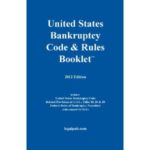
To actually effect abandonment of unadministered assets in a bankruptcy case, the asset in question must appear on Schedule A/B.
That’s the hard teaching of Stevens v. Whitmore from the 9th Circuit BAP.
A passing reference to an asset in the SOFA isn’t sufficient.
Neither was the fact the trustee explicitly knew about the claim then subject to litigation. If the claim wasn’t scheduled on the asset schedule, it wasn’t abandoned, the BAP held.
So when the disputed claim ripened into a sum of money, it belonged to the estate, not the debtors.
Start with the statute
Property comes into the estate automatically upon the filing of a case. Section 541 begins
(a)The commencement of a case under section 301, 302, or 303 of this title creates an estate. Such estate is comprised of all the following property, wherever located and by whomever held:
Property can depart the estate by exemption, sale, or abandonment. Section 554 (c) was at the heart of Stevens:
(c)Unless the court orders otherwise, any property scheduled under section 521(a)(1) of this title not otherwise administered at the time of the closing of a case is abandoned to the debtor and administered for purposes of section 350 of this title.
While not appearing on schedule A/B, the Stevens’ claim appeared in the SOFA. The trustee even discussed the debtor’s pending litigation with them at the 341 meeting. The trustee failed to take any further steps and closed the case no asset.
It was easy to conclude that, not having been administered, the claim was abandoned to the debtors. But when the defendant in the suit proposed a settlement to the trustee and the debtors argued the trustee had no role, the bankruptcy court held the suit was NOT abandoned. Debtors appealed.
BAP elects narrow reading of “scheduled”
An asset listed on the SOFA is not “scheduled” for the purposes of Section 554. I found it ironic while distinguishing “listed” from “scheduled”, the BAP said “the word “scheduled“…refers only to assets listed…”
But the holding is clear. Unless an asset appears (I found another word) on the schedules, it isn’t “scheduled.” And thus, the closure of the case doesn’t effect an abandonment.
The takeaway
Add to your list of things to be cross checked the appearance of pending litigation where the debtor is the plaintiff. We are accustomed to making sure that plaintiffs in pending litigation be listed as creditors on the creditor schedules. So, too, list claims where the plaintiff is the debtor as assets.
Equally, we must determine that any claims belonging to the debtors and pending in the courts make their way to the asset schedules.
More
Fixing the omission from the schedules
Schedules as an exercise in connect-the-dots







